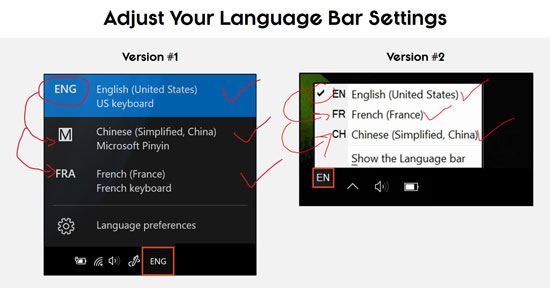
You can combine the Key Tips letters with the Alt key to make shortcuts called Access Keys for the ribbon options. Press the Alt key to display the ribbon shortcuts, called Key Tips, as letters in small images next to the tabs and options as shown in the image below. In the Macro Options dialog box, specify a shortcut key in the Shortcut key box, and then click the OK button.In the Macro dialog box, select the macro name you will assign hotkey, and then click the Options button.Click Developer > Macros to open the Macro dialog box.How do I assign a shortcut key to a macro in Excel?Īssign hotkey to specified macro in Excel
#Excel keyboard shortcuts not working Pc#
If this option was already enabled on your PC yet, keyboard shortcuts don’t work, toggle it off and try again. Step 3: Finally, toggle on the ‘Use Stick Keys’ option. Step 2: Go to the Interaction section on the left-hand menu and select Keyboard.
#Excel keyboard shortcuts not working windows#
Step 1: Launch the Windows Settings menu and select ‘Ease of Access. You can just hit FN + F12 and your save as keyboard shortcut will work.

For example, if F12 for Save As is not working in Word, Excel or PowerPoint, that probably means that your media keys are dominant. Whichever problem you are having with your media keys, adding in the FN key to your shortcut will solve it.

Then I disable the active window title detection with the empty #IfWinActive at the end.Īlso, once the #IfWinActive is hit, I know exactly which window will receive the keys I'm sending, so I don't have to do anything special beyond a simple "Send " in response to each real key-press that is to be replaced. The "#IfWinActive" ensures these particular key-press replacements only apply when the active window's title ends with the string " - Outlook" (the end is marked by the dollar sign, which works because I've enabled Regular Expression based string matching mode above). The script looks like so: SetTitleMatchMode RegEx Or whenever I press I want to go to the search box (d'oh!) but Outlook expects a for that so I have the script send it a. So for example whenever I have an e-mail selected and press I want it to be marked as read, therefore I have the AutoHotkey script replace that with a. My solution is to use AutoHotkey to "translate" my desired key combinations into the existing shortcuts that Outlook 2016 (or Excel 2016 or what have you) expects for those actions. To me all above answers are unsatisfactory because they limit what combinations I can use as custom shortcuts or what actions I can target, or they require way too much work for something that should be simple. With VBA you can actually create longer combos like Ctrl-Shft-N (one of my favorites). You only have the choice of Ctrl and one key, I believe. With #3 it's still the same as it was in earlier versions, just go into the Macro dialog and change the shortcut in Options. still exist behind the scenes in Excel 20 and can be accessed via code). The only way I know to do this now would be to change the toolbar name in VBA (the old toolbars, File, Edit, etc. For example you could change the name of the Edit menu from &Edit to &Zdit and the shortcut sequence in #2 above would be changed to Alt-Z-S-V.

You use to be able to do #2 in Excel by going into Tools > Customize and then changing the location of the ampersand. Of course you can write a macro in Excel that changes the Bold property and then assign a keyboard shortcut to it, but that really falls under #3 above. I don't think Excel has ever allowed you to do this. With # 1 I think only Word allows you to change these, e.g., you can change the shortcut for Bold from Ctrl-B to something else. There are 3 different kinds of keyboard shortcuts I know of:


 0 kommentar(er)
0 kommentar(er)
